Views: 13415
Last Modified: 04.09.2024
Attention!
-
For operations, described in this chapter, knowledge of *nix-systems administration is required. Prior to start of these operations, it is recommended to perform full backup of Bitrix Virtual Appliance.
- Provided settings are listed outside the scope of the Virtual Appliance menu. This means that the details below are provided for informational purposes only and should be used with clear understanding of your actions and under your own liability. Bitrix24 technical support reviews the questions related to Virtual Appliance menu items only.
Second method to increase the space in BitrixVA is to expand the size of already existing virtual appliance hard drive.
-
This example uses Virtual Appliance BitrixVA for VMWare and demonstrates how to increase the size of system hard drive to 100GB:
|
Change system drive size in VMWare
|
|
To do that, it is necessary to launch VMWare Player, select the list of BitrixVA virtual appliance in the VA list and press Edit virtual machine settings:
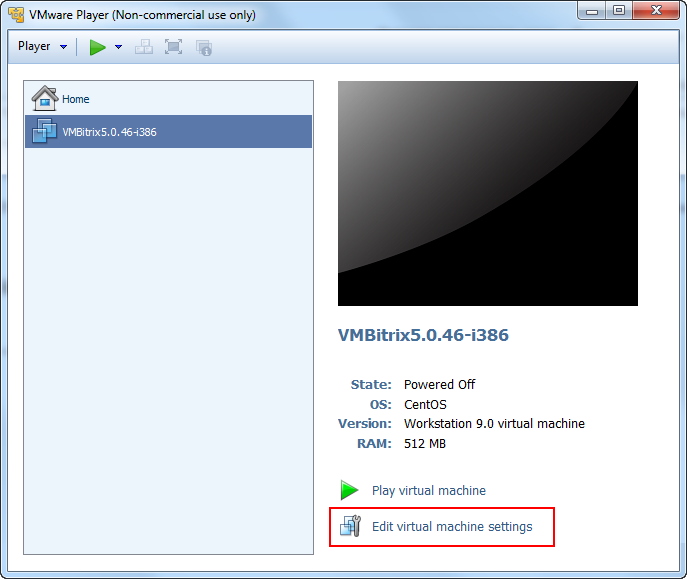
In the device window, select Hard Disk the size of which should be increased and activate Expand item in the Utilities menu:
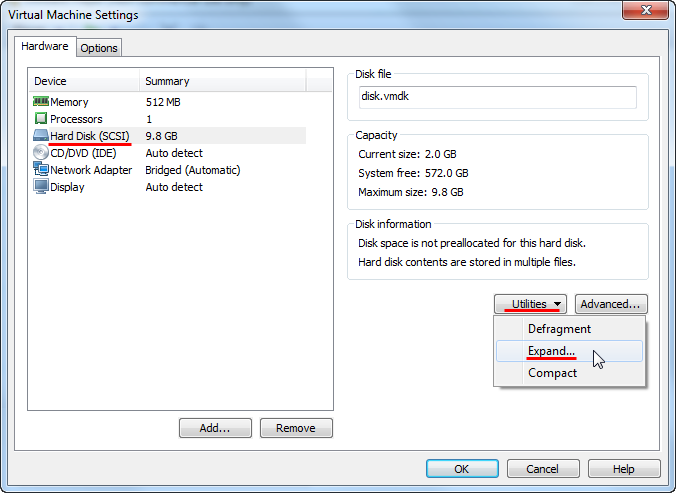
In the opened Expand Disk Capacity window, indicate the required size of virtual disk in the field Maximum disk size (GB) in gigabytes (in this example - 100GB):
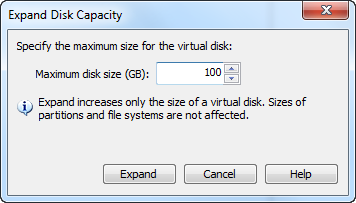
|
|
Change system drive size in VirtualBox
|
|
select Virtual Media Manager in the menu VirtualBox File:
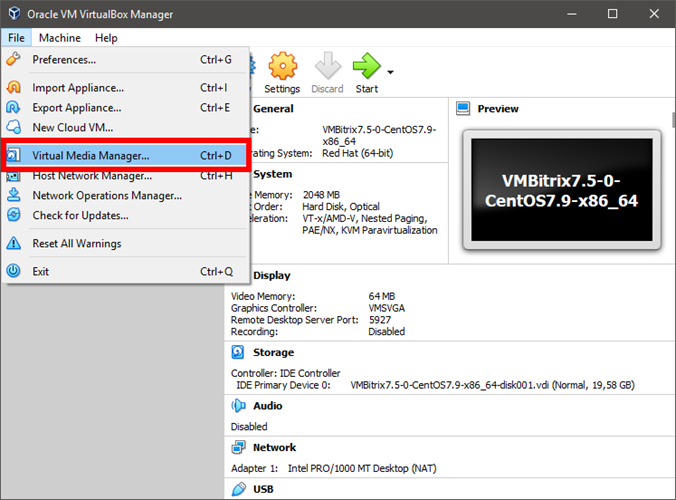
Then select your virtual drive, click on the Properties button and indicate the necessary drive space:
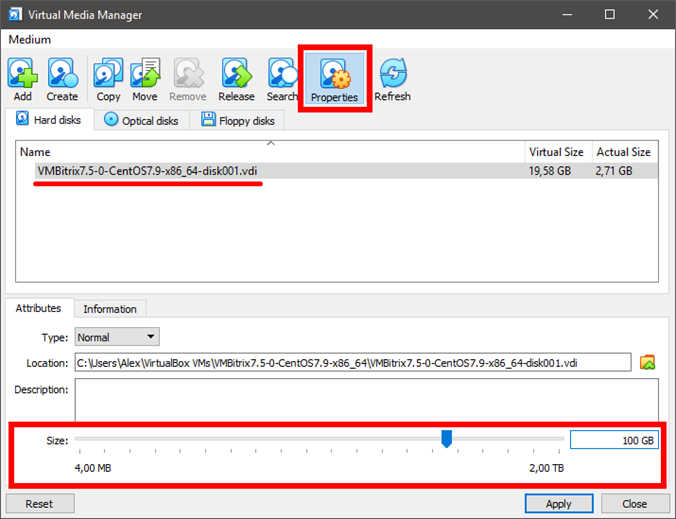
|
- After that, it is necessary to launch Bitrix Virtual Appliance, login under root user and go to command line (console) by selecting the 0. Exit menu item in the Virtual Appliance.
- See the disk and its assigned letter designation via console command:
fdisk -c -u -l
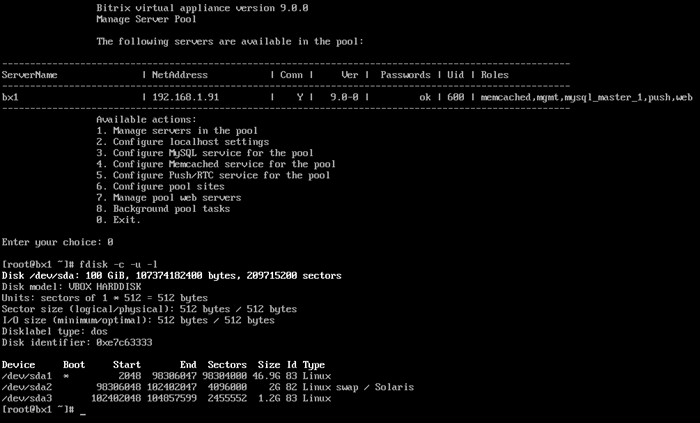
where for the disk /dev/sda:
- sda1 - disk boot sector;
- sda2 - swap file;
- sda3 - partition, where the operating system is installed and which should be expanded specifically.
- Launch the fdisk utility to work with
/dev/sda disk:
fdisk -c -u /dev/sda
- Delete partition sda3 via command d, by selecting
Partition number (1-4): 3:
Attention! Data on the disk is not deleted, in this case, only the partition record is deleted from the disk partition table.
- Next, create a new partition via the n command:
- Primary (primary partition) - p and
Partition number (1-4): 3 command;
- simultaneously, first and last sectors could be selected by default - this way, partition will be created by using all free space on the disk.
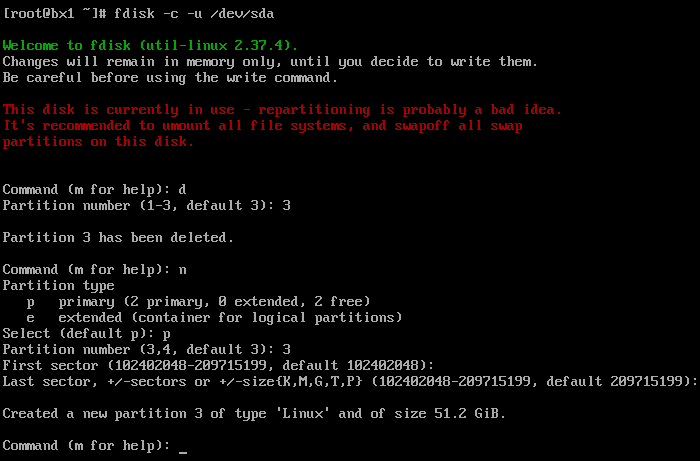
- To save all the modifications of updated partition table and to exit from fdisk, enter the w command:
- For the system to load a new partition table, reboot the Virtual Appliance:
reboot
- After the reboot, increase the size of file system for the partition
/dev/sda3 via the resize2fs utility:
xfs_growfs /dev/sda3
You can check the partition increase via the df command.
The same procedure modifies the disk size in other virtualization environments.






